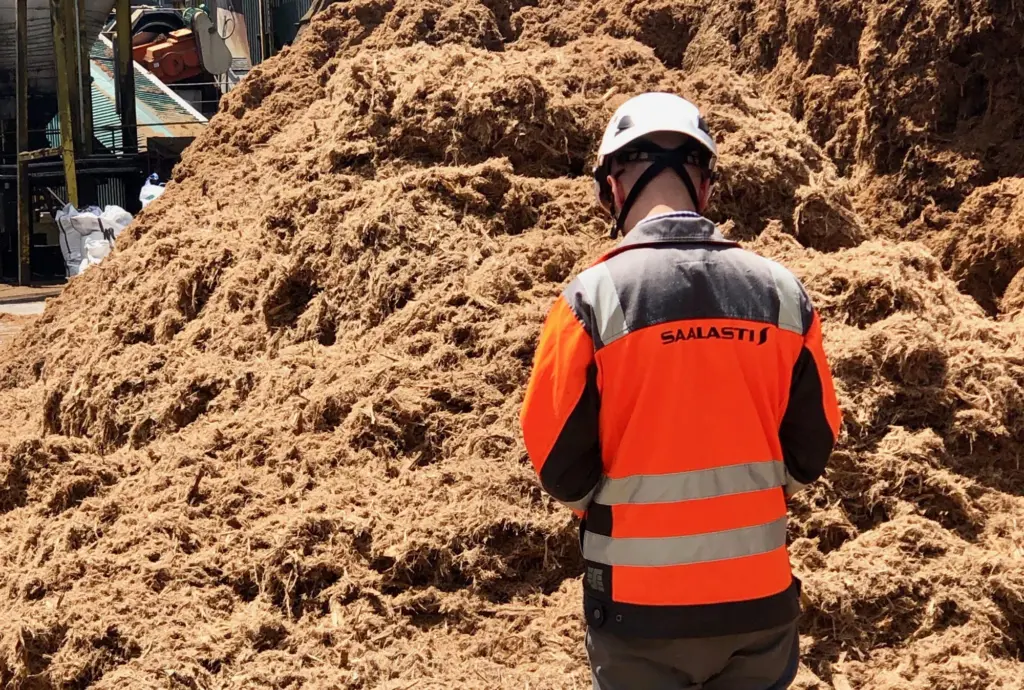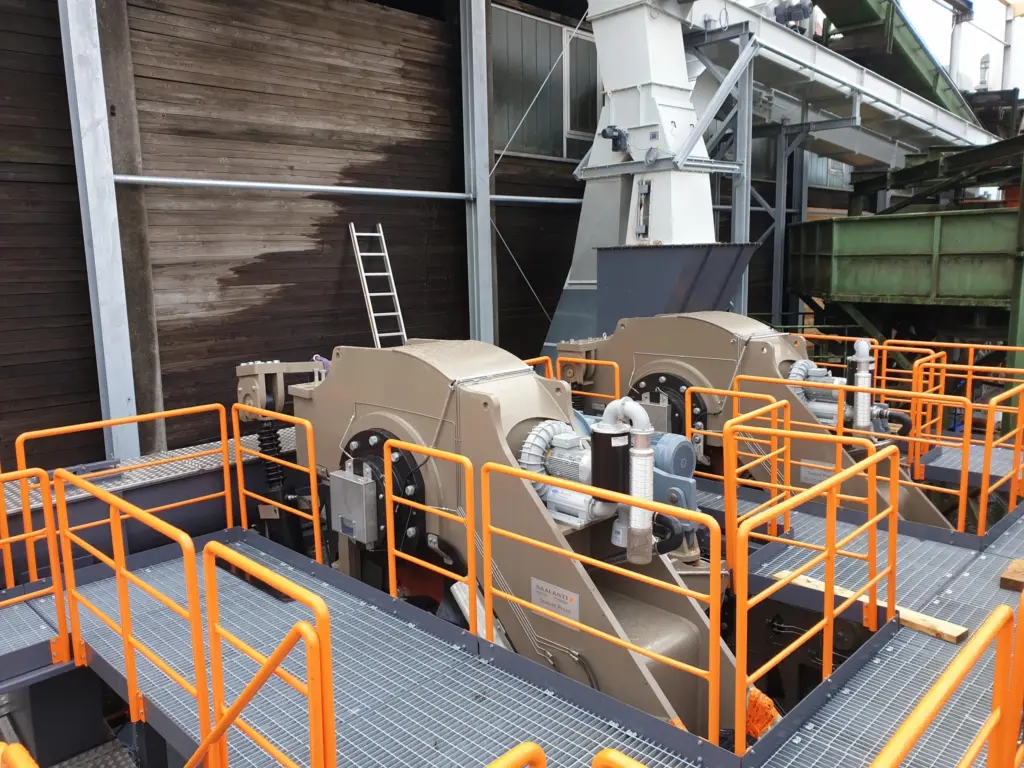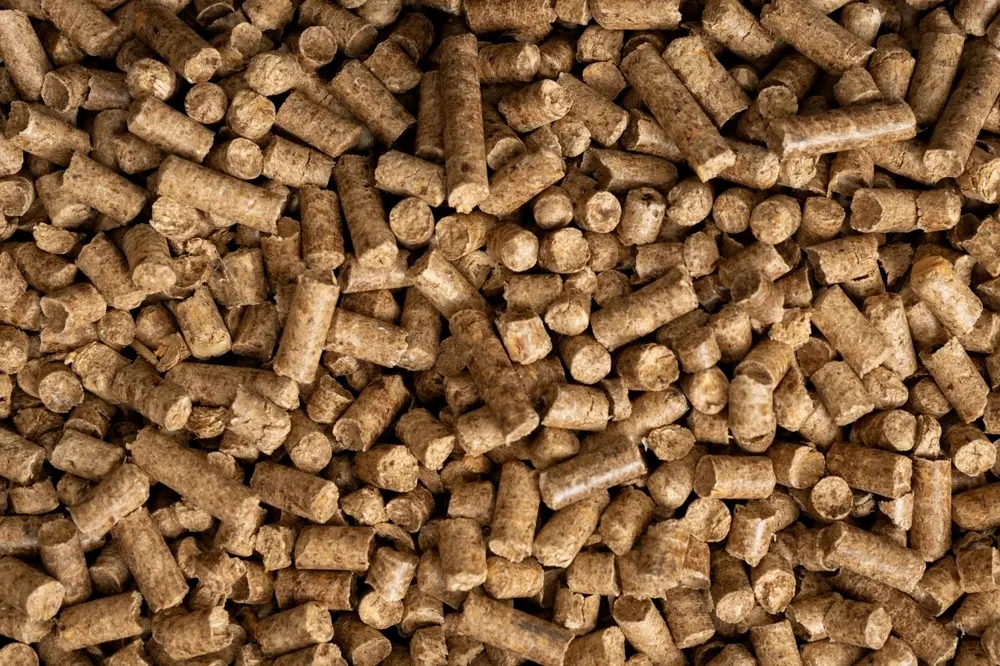News
Biochar production – The benefits of high-performing biomass pre-processing

Biochar production offers significant opportunities to pursue carbon neutrality and promote the green transition. For instance, this so-called “black gold” has great potential in the construction and infrastructure sectors.
Moreover, the new industrial market for biochar is steadily growing, which also means the need for efficient biochar production will increase. For example, biochar has great potential in speeding up the green transition and carbon-negative goals in many industries.
In Europe, the biochar market grew by approximately 80 % in 2021. Estimates vary, but the global biochar market size was valued at 763.48 million USD in 2024, with projected growth to ~860 million USD in 2025 and 2,097.72 million USD by 2032.
According to industry estimates, revenues from biochar producers, distributors, value-added producers, and equipment manufacturers exceeded 600 million USD in 2023, with a CAGR (Compound Annual Growth Rate) of 97% between 2021 and 2023.
Read ahead and learn the potential of biochar and how to make your plant’s biochar production process more efficient.
Saalasti is involved in biochar processing with efficient mechanical dewatering and particle size reduction methods.
Glossary of key terms in biochar production
- Biochar: A stable, carbon-rich material produced by heating biomass in a low-oxygen environment (pyrolysis). Biochar can store carbon, improve soil quality, and replace fossil materials in industry.
- Biomass: Organic material, most commonly from plants, wood, or agricultural by-products. It can be used directly as fuel or raw material for producing energy, heat, biofuels, and value-added products like biochar.
- Carbon sink: A process or material that captures and stores more carbon from the atmosphere than it releases. Biochar can turn carbon from biomass into a stable form instead of returning CO2 to the atmosphere. As a result, biochar is considered a carbon sink.
- Carbon neutrality / Carbon negative: Carbon neutrality means balancing carbon emissions with carbon removal. Carbon negative goes further by removing more carbon than is emitted.
- CO₂ equivalent (CO₂e): A measurement used to compare the climate impact of different greenhouse gases, expressed as the amount of carbon dioxide that would have the same global warming effect.
Biochar production depends on biomass
Biochar is produced in pyrolysis, where organic material is heated to a high temperature in a low-oxygen environment. This creates a stable carbon-rich material with a larger surface area and a porous structure. As a result, some of the carbon is not released into the atmosphere but remains in the resulting material.
Biochar is mainly produced from plant-based biomasses, such as wood industry by-products, straws, and demolition wood. However, a growing tree still binds carbon in its trunk, so using side streams for biochar is more beneficial than growing trees.
We offer solutions for fiber-based biomasses used in biochar production.
The quality of biomass is a crucial factor in quality and potential uses of biochar. There is no one-size-fits-all biochar, as different types are suitable for different purposes.
The properties of biochar are affected by the used raw material, the production process, and post-treatment. For instance, the particle size of the biochar matters. A larger size of biochar is considered better for improving soil ventilation, while a finer size is more suitable for supporting beneficial microbes.
Read more: Wood biomass processing with Saalasti machinery – A guide to materials and industrial applications
A perfect solution for projects committed to carbon-neutral or carbon-negative goals
There is a good reason why biochar is expected to be the next big thing to curb carbon emissions:
- Biochar is a carbon sink that absorbs more carbon from the atmosphere than it releases. While estimates vary, recent studies suggest that each ton of biochar can net remove approximately 2.68 tCO2e. For comparison, a typical passenger vehicle emits 4.6 metric tons of CO₂ per year.
- Biochar improves the soil’s nutrient binding and water retention capacity and adds to the soil’s porosity.
- Biochar can bind/absorb hazardous chemicals and compounds, such as heavy metals and pesticides.
- Biochar has a great water retention capacity and can retain water up to five times of its own mass.
Applications of biochar
There are several uses for biochar in the infrastructure and building sector, and new applications are constantly being developed. The current use cases of biochar include, but are not limited to:
- Improving the soil in green areas in the construction sector.
- Treating water and urban runoffs.
- Purifying soil and water systems.
- Replacing fossil coal and coke in the steel industry.
As an example, in Finland, Outokumpu is investing in a biocoke plant in Tornio that will utilize forestry and wood residues to replace fossil coke. The company estimates this will reduce its direct CO₂ emissions by about 82,000 tonnes per year. This corresponds to the annual emissions of 8,000 Finnish citizens.
At Saalasti, we are eager to tap into the benefits of biochar and step into new biochar applications as the innovation develops.
Saalasti’s biomass processing solutions
How to get the most out of biochar production with high-performing pre-processing?
Every stage of biochar production is crucial to the quality of the resulting material. Pre-processing plays a significant role in ensuring the biomass is sufficiently dry and stable-sized before pyrolysis.
At Saalasti, we offer solutions for processing biomass before it is exposed to heat in the pyrolysis process:
1. Reduction and standardization of particle size.
Crushing biomass is a crucial step in the early stage of biochar production. When the particle size is controlled, it results in a more uniform mass that can be utilized with greater efficiency. Saalasti Biomass Crushers (Horizontal and Vertical) are the market-leading solutions for particle size reduction.
Read more: Reduction of particle size
2. Mechanical dewatering of biomass.
The dryer the biomass is before pyrolysis, the greater the energy savings you can expect while reducing operating costs and carbon footprint. With our mechanical drying solutions, we can drastically reduce the water content of any fiber-based biomass.
Once biomass is first pressed mechanically, the following step with thermal dewatering requires significantly less energy, dropping from 700-1000 kWh to only 30-50 kWh per cubic meter of water removed. With our solution, it is possible to save up to 50% of energy in biochar production compared to only thermal drying.
The best machines for mechanical dewatering include the Saalasti High-Pressure dewatering press “Hippo” and the market-leading Bark Press.
Read more: Mechanical dewatering
The benefits of Saalasti solutions in biochar production:
- Up to 50 % energy savings in the drying process.
- More homogenous and higher-quality material improves productivity and allows capacity scaling.
- No more seasonal fluctuation in production, as the biomass has a steady, even quality all year round.
Saalasti’s unique mechanical drying technology is unmatched in its field.
Do you want to hear how our solutions can support your biochar production? Contact us!
Read customer story: Maximal production volume with the same amount of heat (Van Roje)


